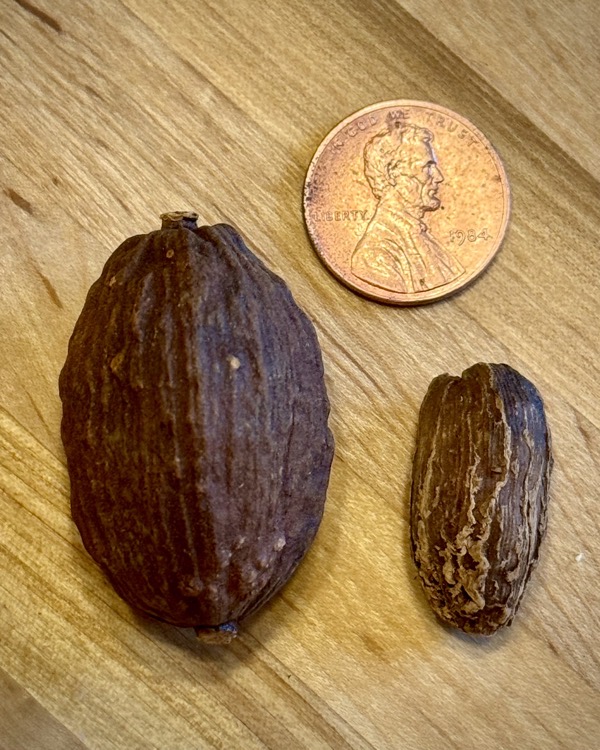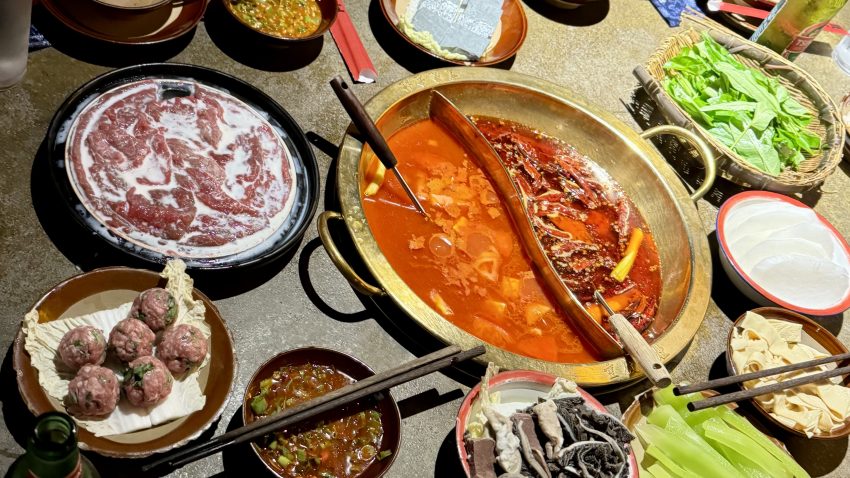Although Fuchsia Dunlop called a hotpotization of Chinese cuisine a step down from the wok mastery, for gatherings at home, hot pot is a huge step up.
Here are some of the advantages of hot pot meals:
— no skill is required, just planning and chopping;
— most of the meal can be prepared way in advance allowing hosts to be an equal part of the table without any pressure from the kitchen;
— with all modern diet fads and allergies, selection of food to cook can accommodate everyone;
— the conversation — this interactive meal fuels it like nothing else;
— children entertain themselves.
This is what you need for the ritual:
— electric pot for one or two broths. No need to go fancier than that. In one restaurant in Flushing, I saw a pot divided in nine, like a tic tac toe board. No electric pot? A small induction or gas burner for the table plus a wide shallow soup pot;
— chopsticks, tweezer tongs, or whatever utensils you prefer;
— small strainers — one for the whole table can be enough — to fish for the bits lost in broth;
— a small ladle or two;
— if you have diners with poor chopstick skills who insist on practicing, you’d want to cover the table with plastic.
The meal itself consists of three parts: the broth, the food you cook, and the best part — the sauce.
Part one — the broth.
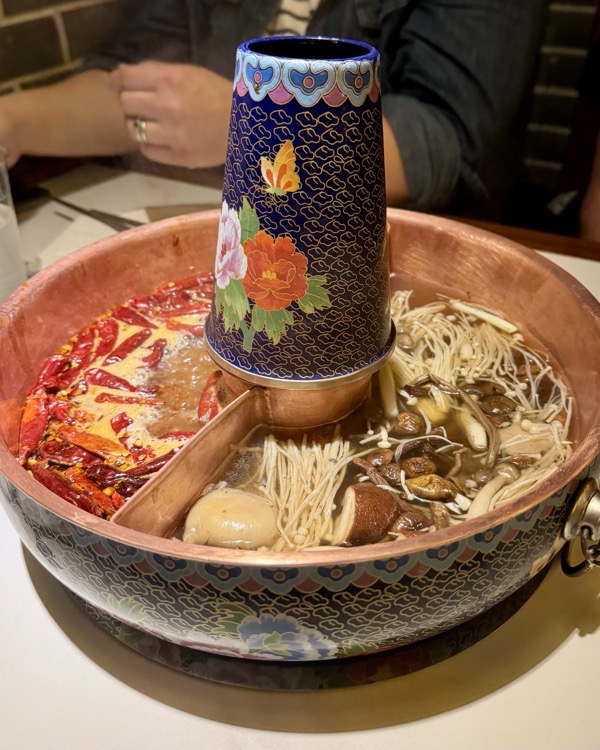
You can make up your own broth, there are plenty of recipes on the web. Some newer Chinese books have them scattered throughout. I can send you a recipe for the ones I’ve tried and adapted to my circumstances. Do not feel turned away by the amount of oil or tallow — you’re picking up your food with chopsticks and all the fat remains in the pot. It’s not like scooping mashed potatoes with all the beat in butter by a forkful.
Some broth ideas:
— Sichuan ma la: lots of hot peppers, Sichuan peppercorns, garlic, ginger, five spice powder, fermented black beans, doubanjian, Shaoxing wine, black cardamom, longan berries;
— Duck broth with shiitake, goji berries, garlic, ginger, and scallions;
— Tomato broth which can be spcied up with chilies, Sichuan peppercorns, and five spice, or be left mild with garlic and shallots;
— Fish broth seasoned with sour mustard leaves, garlic chives, and ginger and thickened with cornstarch;
— Green bean broth umped with garlic, ginger, pickled mustard, and fermented bean curd;
— Mushroom broth accented with ginger, scallions, goji berries, and black cardamom;
— Lamb broth…
— Cured meats broth…
— Garlic-ginger broth…
— Pork bone broth…
— Chicken broth…
— Coconut broth…
— Chrysanthemum broth…
— Seafood broth…
Sky is the limit for those with imagination, so is the internet for the rest of us.
Part two — things to cook.

Anything goes. Just cut it all like for a stir fry:
— meat of any kind;
— offal if you like it — in Chinese restaurant menus, any offal is listed under the section called “Delicacies;”
— chicken;
— fish and seafood;
— quail eggs are good;
— tofu and bean curd of all kinds;
— meatballs and fishballs;
— dumplings and noodles;
— mushrooms;
— root vegetables;
— leafy greens;
— cabbages;
— corn…
And the sauce!
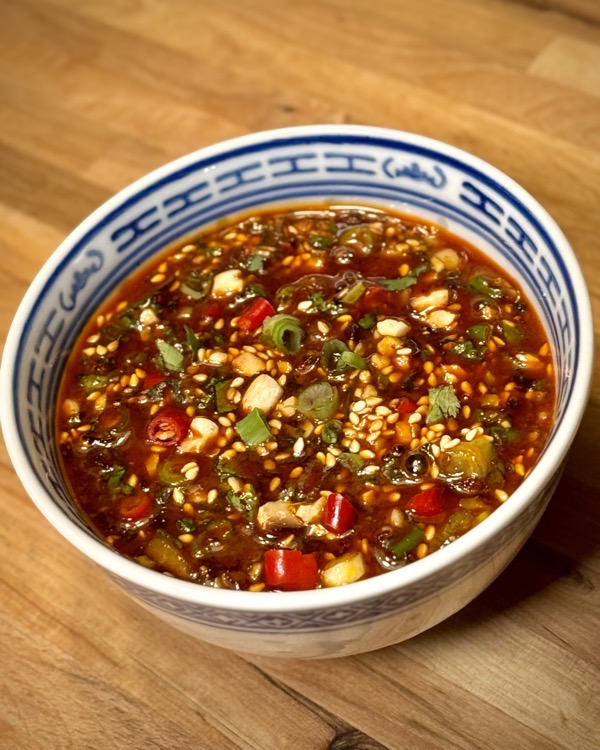
You do not make it. Each guest makes their own. Your job is to provide bowls big enough to mix and hold all that that goodness without spillage. Large cereal bowls or small soup cups are perfect.
Do not place sauce ingredients on the table. Instead, create a station in the far corner of the kitchen to accommodate the selection and the intimacy for the mixing ritual. It is personal. I wouldn’t want anyone to know that I can drink fish sauce by the ladle or scoop hot peppers with a tablespoon, or to see the mess I create loading my bowl with garlic, cilantro, and scallions. No one should judge me spilling sesame seeds or peanuts all over because they don’t fit but I like a lot of them. I bring my bowl to the table all neat and mixed and no one knows that the sesame paste and the chili oil are gone because it was me who used them all up. These kind of considerations.
These are the two mixing stations — one from a restaurant in Beijing and another one from Flushing.

They are always in a far dark corners of a restaurant.
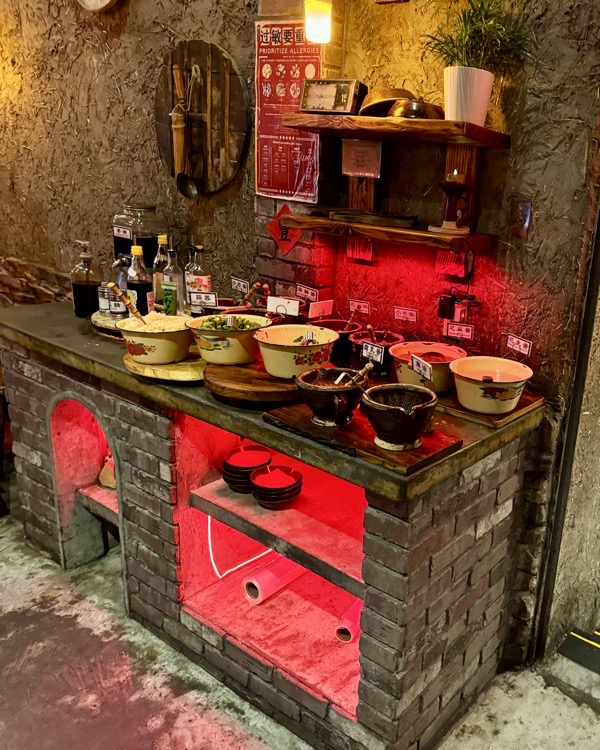
My list of sauce ingredients is only a suggestion based on what I saw on my hot pot dining trail and read in my cookbooks:
— soy sauce;
— fish sauce;
— oyster sauce;
— sesame paste (Chinese not tahini — a world of difference!);
— chili oil;
— garlic crunch;
— chili flakes (toasted are better);
— hoisin sauce;
— mashed fermented tofu (red has more flavor);
— toasted chopped peanuts;
— toasted sesame seeds;
— lots of fresh chopped garlic (as four, we use the whole head);
— ginger;
— scallions;
— cilantro.
All is not necessary — use whatever you’ve got — less or more.
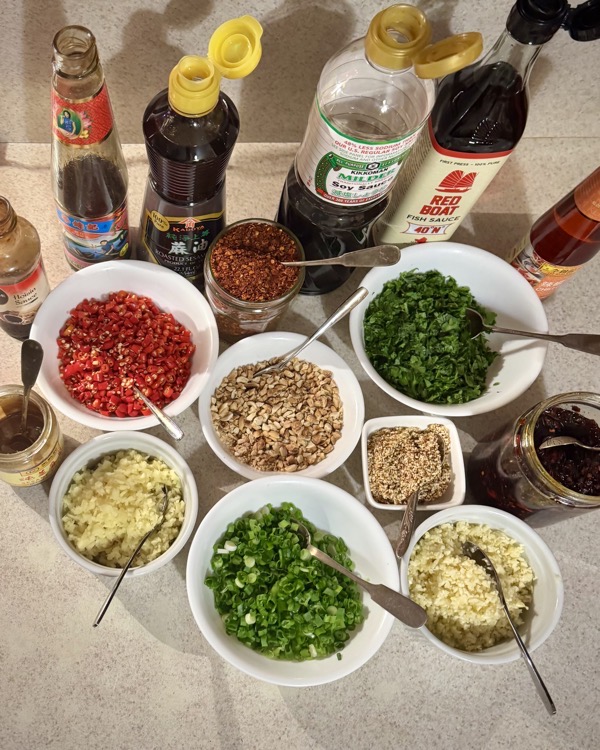
Some of my friends were surprised to learn that Chinese use black cardamom. They do. A lot. This is to show the Chinese one, aka Tsaoko, on the left. The magnitude of flavor is as different as the size.
